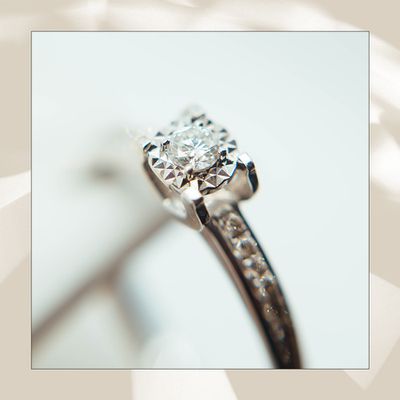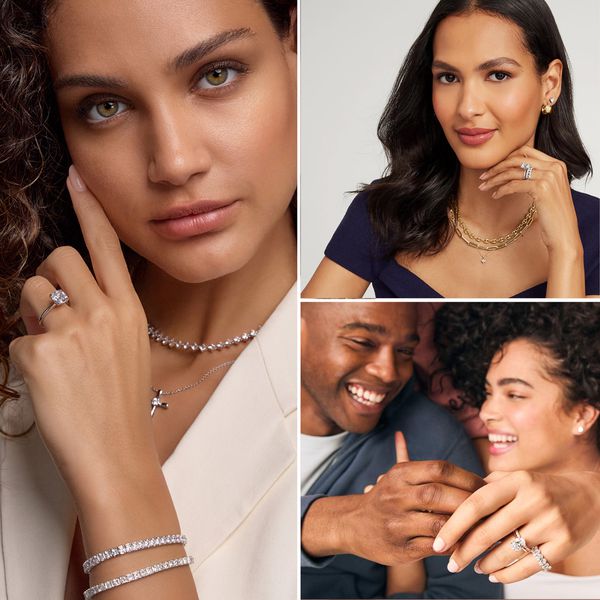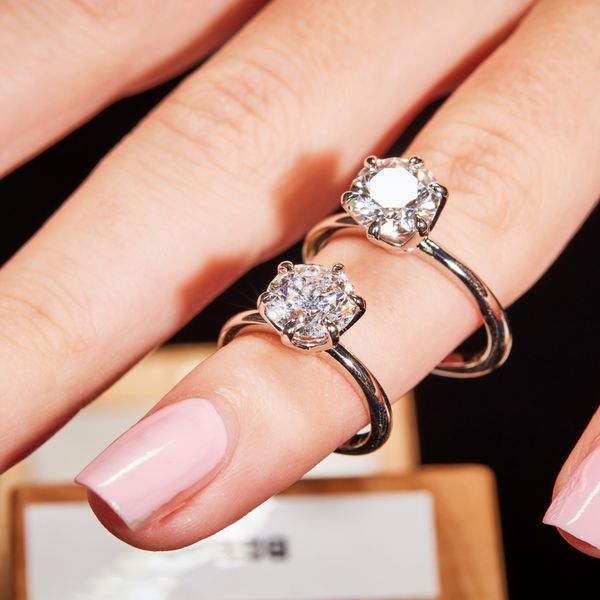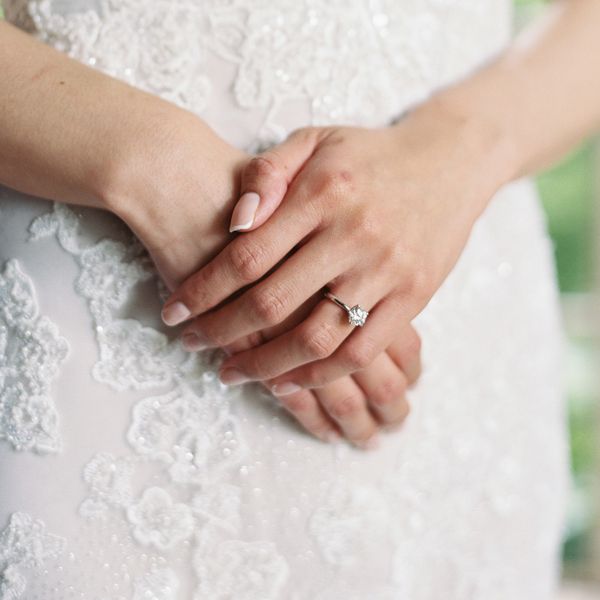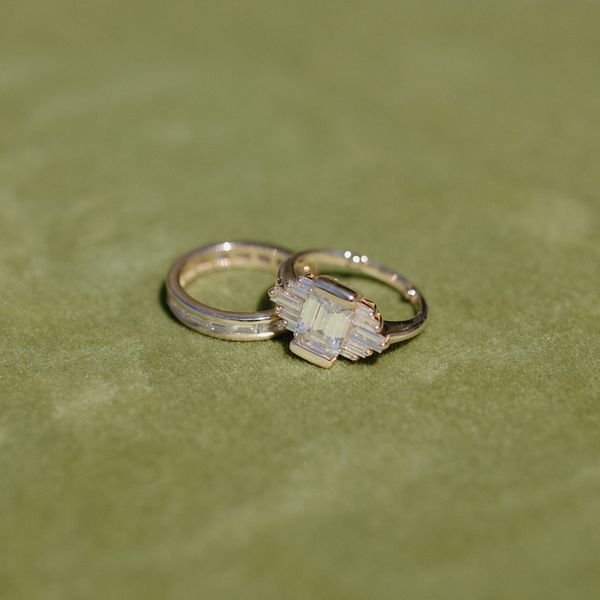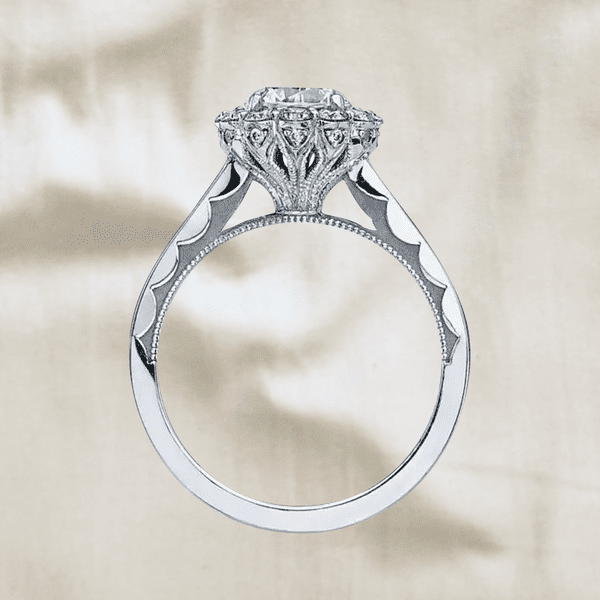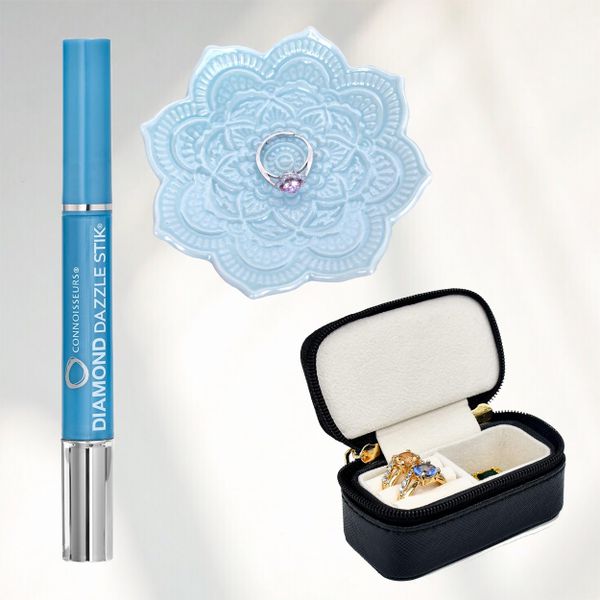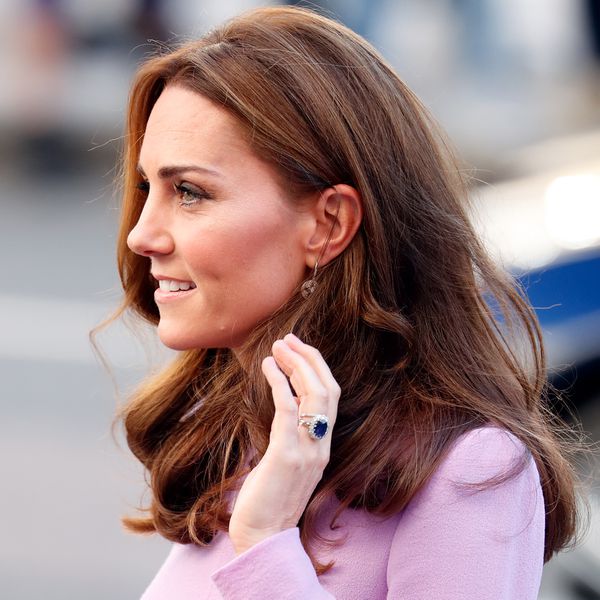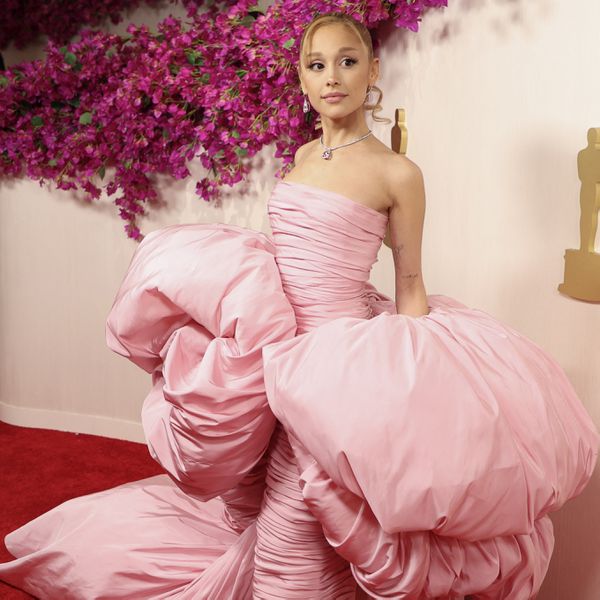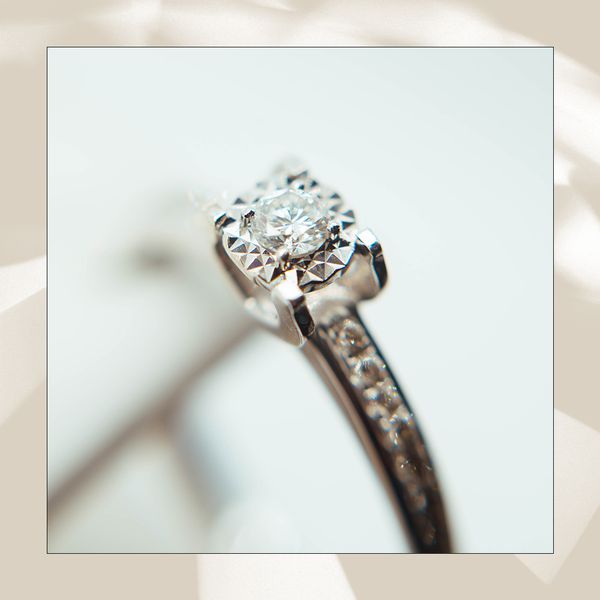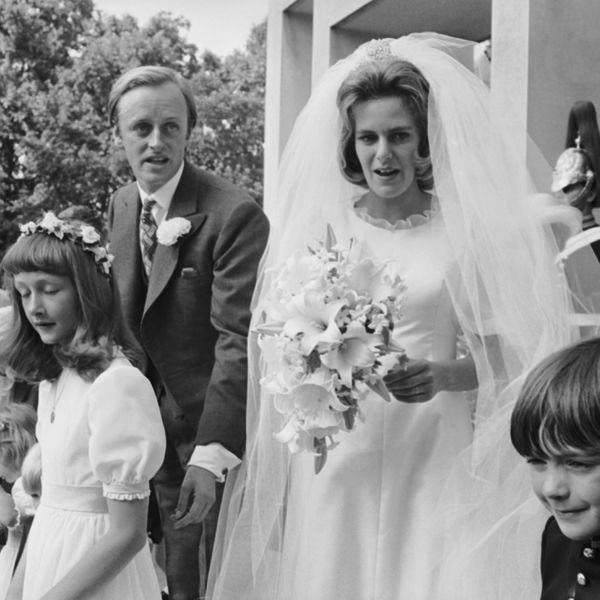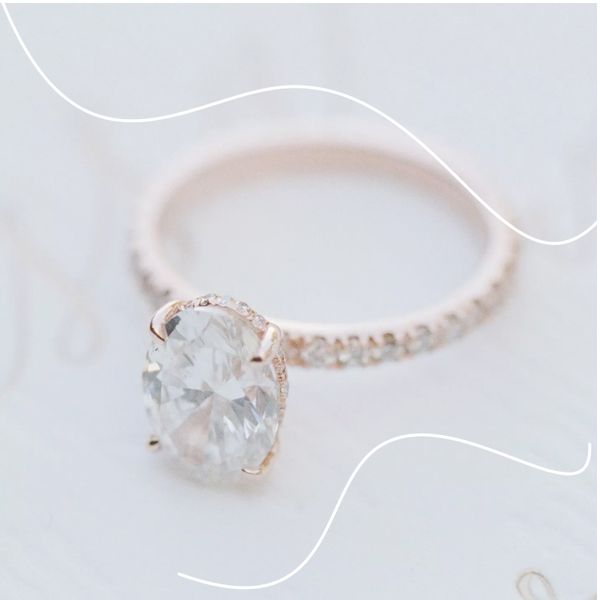:max_bytes(150000):strip_icc()/weddingringss-d22281ac07be4bcfb685b40085db223e.jpg)
Photo by Alicia Mink Photography
In This Article
Picking out the perfect engagement ring for your partner can be an overwhelming task. Even if your significant other basically spells out exactly what they want, it can still be nerve-wracking to settle on one ring they'll want to wear forever. Between the stone, the metal, and the overall price point (among other factors), finding something that's truly memorable comes with a lot of pressure.
To help ease a bit of your stress, however, we thought it might be helpful to put together a guide on how to make a few key decisions when engagement ring shopping. (Hint: It's not about buying the biggest, most expensive engagement ring out there.) Ahead, with help of jewelry expert Lauren Addison, here's everything you need to know when searching for a rock that your soon-to-be fiancé will absolutely love.
Meet the Expert
Lauren Addison is a jewelry expert with over 12 years of experience. She's an alumnus of the Gemological Institute of America (GIA), where she earned a Graduate Gemologist Diploma, and the owner of Lauren Addison Jewelry.
What to Consider When Choosing an Engagement Ring
There's a lot to think about when looking for an engagement ring, but before you dive in, you should first be aware of a few basic details that come with this experience. "Before you jump right in, it is best to give some thought to your budget, the stone shape you prefer, and your ring’s overall design," says Addison. "Having a basic idea of what you’re looking for will minimize stress and ensure a more seamless and enjoyable experience." Simply put, you need to prepare a bit.
To start, the most important thing to decide on right away is the budget. Having an established budget can immediately help eliminate some choices, and can also point you in the right direction toward a jeweler you should consider. After that, everything else lies in the details, like the metal, stone, size, and setting.
:max_bytes(150000):strip_icc()/01-9f75faaf27f742ff94d06af780ad5a36.jpg)
Photo by Biancca Wallace
How to Choose the Right Style
There are many different engagement ring styles available today, ranging from modern and minimalist to vintage and elaborate—and everything in between. So for this particular detail, you really need to think about what your partner is interested in before choosing a final piece. "Jewelry is a reflection of one's personality and style, so there is no one better suited to make this decision than your partner," Addison says. Or you, if you don't want their input.
If you're comfortable asking your significant other what they like, do so. But if you want this to be a total surprise, try asking your partner's close friends or family members for their advice. Don't have anyone to ask? Look at the jewelry they already own, and take some photos or describe it to a trusted jeweler when ring shopping.
"Do they gravitate towards clean lines and minimalist designs? Perhaps an emerald-cut solitaire is for them," shares Addison. "Does their style lean more bold and non-traditional? Consider a gypsy-set diamond ring. Looking for maximum sparkle? Perhaps a round brilliant-cut diamond with a pave diamond setting." Spend a bit of time researching different styles to figure out what your partner may like best.
:max_bytes(150000):strip_icc()/gia-diamond-engagement-ring-HARWELL-PHOTOGRAPHY-b57dadb7305749cbaf182bb388ba75c5.jpg)
Photo by Harwell Photography
How to Choose the Right Metal
For an engagement ring, the most popular metal options are usually yellow gold, white gold, rose gold, or platinum, though some rings are made of palladium, sterling silver, or titanium. Therefore, it's definitely worth researching the different types of metals to see which is the most durable, which is the most and least expensive, and what works best for specific lifestyles.
Of course, aesthetics are important as well—some people prefer all yellow gold while others love platinum. "Consider the jewelry your partner typically wears," Addison says. "Do they gravitate towards warmer metals, such as yellow gold, or perhaps cooler hues such as platinum? If he/she/they wear both platinum and yellow gold, consider mixing metals to complement the other pieces in their jewelry collection."
:max_bytes(150000):strip_icc()/sapphire-engagement-ring-erich-mcvey-1123-950639eb86014a1991962ca59cb8a396.jpg)
Photo by Erich McVey
How to Choose the Right Stone
While diamonds are obviously the go-to for engagement rings, they certainly aren't the only stones on the market. Colorful gemstones, such as sapphires and rubies, are popular choices for anyone who wants a non-traditional rock. What's more, if you want the look of a diamond but don't want to pay diamond prices, moissanites and morganites are great choices. Lastly, lab-grown diamonds are also a wonderful option for those on the hunt for ethical and sustainable wedding jewelry.
Whatever stone you decide on, be sure to also consider the carat weight and the quality. The carat weight will determine the size of the stone, as well as the price (higher carats cost more), and you'll certainly want to ensure that the quality will be good. However, Addison does advise against getting hung up on the paperwork when making your final decision. "Certificates are there for guidance and transparency, but should not be the deciding factor," she says. "Choose a diamond that speaks to you most and evokes an emotional response."
:max_bytes(150000):strip_icc()/halo-ring-wedding-band-ROSSINI-PHOTOGRAPHY-Main-fb3a9f6c5e2c42549ad851077c59d416.jpg)
Photo by Rossini Photography
How to Choose the Right Size
The size of the center stone is important to some people, while others couldn't care less, but regardless of your personal preferences, be sure to always keep your budget in mind. Additionally, when selecting a size, don't assume that a higher carat weight automatically means a larger diamond. "Do not focus on diamond’s carat weight, but rather pay attention to its measurements, as that is what you will see," Addison says. "I often see consumers purchasing a higher carat weight at a premium when a lower weight would have provided a larger visual appearance at a lower price point."
Consider what your partner likes and what their personality favors. Do you think they want a large flashy ring? Or do you think that they would be more interested in something smaller and more subtle? If you don't think they care, save your money and get something smaller or more moderately sized.
:max_bytes(150000):strip_icc()/cleaning-diamond-ring-greg-fink-2d2dbfde5fb9474587d87f660e2a35a1.jpg)
Photo by Greg Finck
How to Choose the Right Setting
Engagement rings come in a wide variety of settings. Some are simple and subtle, some are meant to grab everyone's attention, and some are in between. So again, it's crucial to have an idea of your partner's overall style, as the setting has a huge effect on the vibe and look of a ring.
Furthermore, you should also keep your soon-to-be-fiancé's lifestyle in mind when making a decision. "If your partner leads an active lifestyle or perhaps works with their hands, consider a low-set diamond with minimal embellishments," Addison suggests. "Your center stone will be less likely to chip and your ring will be more secure."
And to no surprise, your budget will come into play here, as well. "If you are working within tight financial parameters, opt for a more simplified solitaire mounting, allocating the bulk of your budget to the center stone," Addison adds.
:max_bytes(150000):strip_icc()/pear-shaped-engagement-ring-chichi-ari-1123-b57ba39fc9e74f80bae35fb3cd203935.jpg)
Photo by Chi-Chi Ari
How to Choose the Right Budget
By now, we're sure you understand the importance of having a solid budget in place before ring shopping. Therefore, make sure your budget is strictly a personal decision, and don't base anything on what you think other people might be spending.
"The old adage of spending three months’ salary no longer bears any merit, and this often-significant financial decision should be based on your personal financial situation and desired ring preference," Addison says. "Consider your current financial obligations and future goals, and simply weigh your earnings versus expenses. You do not want this ring to be a burden, so try not to overextend yourself and perhaps start saving sooner than later."
:max_bytes(150000):strip_icc()/__opt__aboutcom__coeus__resources__content_migration__brides__public__brides-services__production__2016__12__01__583f725f5f12914d4e7851e1_10-2d91e94693454b14a77110ea5cb0f309.jpg)
Photo by Camille Catherine Photography
How to Choose the Right Jeweler
Working with a trusted jeweler can be an important part of the ring buying process, even if you're purchasing something online. According to Addison, you want to find someone knowledgeable and trustworthy who has the credentials and clients to back them up. "It is important that you work with someone who takes the time to educate you and provide you with the information you need to make an informed purchase," she adds. And if a jeweler isn't helpful or isn't providing you with what you're asking for, look for someone else.
"Once you have determined that you’ve found someone with a positive reputation and skill set, be sure that they are capable of delivering you with an impeccably designed and crafted ring," Addison shares. "Review their portfolio and ask to see a few examples of their existing work." Essentially, be sure to do the research to ensure that your jeweler is someone you can trust.

